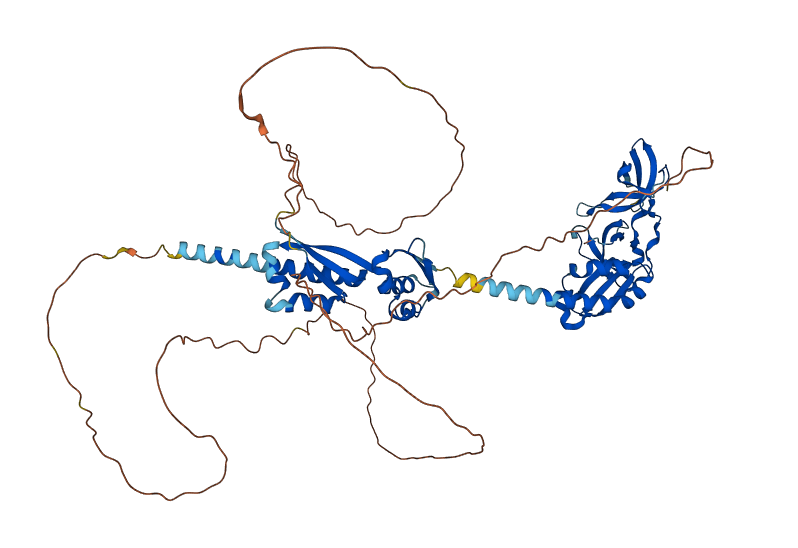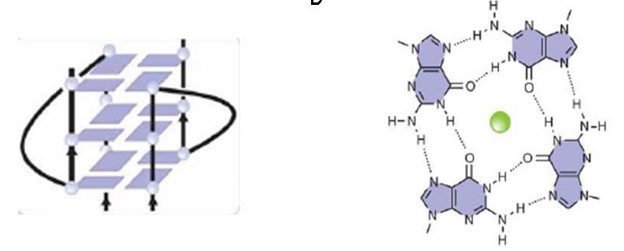User:Daniel Key Takemoto/Sandbox 1
From Proteopedia
m |
m |
||
| Line 33: | Line 33: | ||
The K-homology domain (KH domain) folding is similar to other RBPs domains, which play an important role in RNA binding and protein-protein interactions. | The K-homology domain (KH domain) folding is similar to other RBPs domains, which play an important role in RNA binding and protein-protein interactions. | ||
| - | Here it is the <scene name='96/969643/ | + | Here it is the <scene name='96/969643/Kh0_motif_1/1'>TextToBeDisplayed</scene> highlighted in red. Many RNA-binding proteins contain the KH motif, a conserved RNA-binding domain, but different from the KH1 and KH2 motifs, which contain a GXXG canonical motif, that will be explained in further details in the next topic, instead this one has an <scene name='96/969643/Akea/1'>A-K-E-A</scene> sequence. It is most likely involved in RNA binding and regulation, as seen in other proteins that also contain KH motifs. To give a more thorough response addressing the precise role played by the KH theme in FMRP, additional details would be needed. The <scene name='96/969643/Kh0_motif/1'>Three beta sheets of the KH0 motif</scene> |
Overall, the FMRP NTD plays an important role as an RNA-binding protein, and its involvement in RNP complexes and its specific domains and motifs allow it to bind to specific RNAs and regulate their translation. <ref>MYRICK, L. K. et al. Human FMRP contains an integral tandem Agenet (Tudor) and KH motif in the amino terminal domain. Human Molecular Genetics, v. 24, n. 6, p. 1733–1740, 20 nov. 2014.[https://doi.org/10.1093/hmg/ddu586]</ref> | Overall, the FMRP NTD plays an important role as an RNA-binding protein, and its involvement in RNP complexes and its specific domains and motifs allow it to bind to specific RNAs and regulate their translation. <ref>MYRICK, L. K. et al. Human FMRP contains an integral tandem Agenet (Tudor) and KH motif in the amino terminal domain. Human Molecular Genetics, v. 24, n. 6, p. 1733–1740, 20 nov. 2014.[https://doi.org/10.1093/hmg/ddu586]</ref> | ||
Revision as of 14:52, 21 June 2023
Structure of FMRP
Predicted FMRP
Fragile X messenger ribonucleoprotein (FMRP) is encoded by the fragile X messenger ribonucleoprotein 1 (FMR1) gene, located in the X chromosome, and is associated with the fragile X syndrome (FXS), Fragile X Tremor/Ataxia Syndrome (FXTAS) and Premature Ovarian Failure (POF1). FMRP functions as a synaptic regulator by binding to mRNAs and inhibiting its translation, therefore regulating the synthesis of proteins in the synapse. It is also an RNA binding protein, which is responsible for the transportation of mRNAs to the cytoplasm. The FMRP can also bind to its own FMR1 transcripts, possibly as a self-regulatory mechanism.
The FMRP is highly expressed in neurons and genitalia, and it's located mostly in the cytoplasm and lower levels in the nucleus. It contains domains related to its RNA binding function, either in the N-terminal or C-terminal domain; the Agenet and the KH0-motif are located in the N-terminal domain, and they, respectively, exerce functions in binding to methylated lysin and RNA binding; the KH1 and KH2 motifs are located in the central region of the protein; and the RGG box, in the C-terminal domain, acts as a binding to RNA, especifically to G-quadruplexes, a secondary RNA structure. The KH1, KH2 and RGG box domains allow the FMRP to bind and translate a number of mRNAs related to the synaptic plasticity. [1]
The protein has 20 non-redundant isoforms and the most common is isoform 7, and the longest isoform contains 632 aminoacids. [2].
The predicted image was generated from Ensembl, by the AlphaFold program.
Overall structure
| |||||||||||



